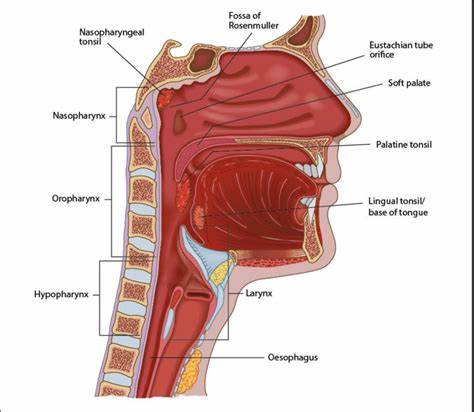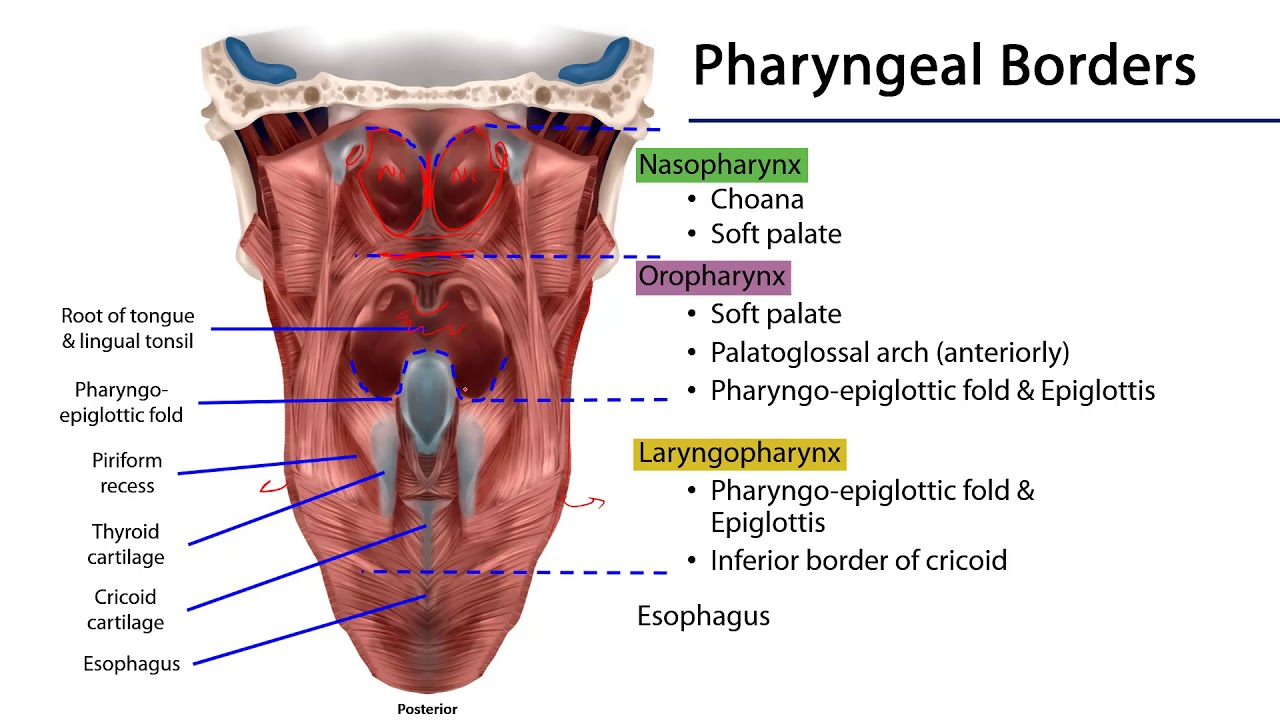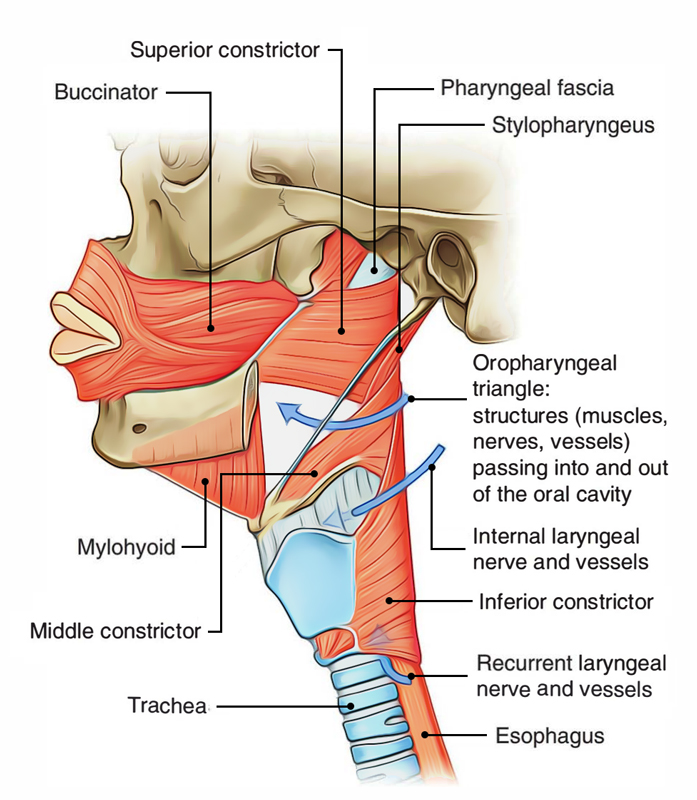Makindo Medical Notes"One small step for man, one large step for Makindo" |
|
|---|---|
| Download all this content in the Apps now Android App and Apple iPhone/Pad App | |
| MEDICAL DISCLAIMER: The contents are under continuing development and improvements and despite all efforts may contain errors of omission or fact. This is not to be used for the assessment, diagnosis, or management of patients. It should not be regarded as medical advice by healthcare workers or laypeople. It is for educational purposes only. Please adhere to your local protocols. Use the BNF for drug information. If you are unwell please seek urgent healthcare advice. If you do not accept this then please do not use the website. Makindo Ltd. |
Anatomy of the Pharynx
-
| About | Anaesthetics and Critical Care | Anatomy | Biochemistry | Cardiology | Clinical Cases | CompSci | Crib | Dermatology | Differentials | Drugs | ENT | Electrocardiogram | Embryology | Emergency Medicine | Endocrinology | Ethics | Foundation Doctors | Gastroenterology | General Information | General Practice | Genetics | Geriatric Medicine | Guidelines | Haematology | Hepatology | Immunology | Infectious Diseases | Infographic | Investigations | Lists | Microbiology | Miscellaneous | Nephrology | Neuroanatomy | Neurology | Nutrition | OSCE | Obstetrics Gynaecology | Oncology | Ophthalmology | Oral Medicine and Dentistry | Paediatrics | Palliative | Pathology | Pharmacology | Physiology | Procedures | Psychiatry | Radiology | Respiratory | Resuscitation | Rheumatology | Statistics and Research | Stroke | Surgery | Toxicology | Trauma and Orthopaedics | Twitter | Urology
Related Subjects: |Anatomy of the Oesophagus |Anatomy of the Diaphragm |Anatomy of Large Bowel |Anatomy of Small Bowel |Anatomy of the Biliary system |Anatomy of the Eye |Anatomy of the Larynx |Anatomy of the Ear |Anatomy of the Pharynx |Anatomy of the Nose |Anatomy of Male Genitalia |Anatomy of Breast |Anatomy of the Stomach |Anatomy of the Rectum |Anatomy of the Spleen |Anatomy of the Liver
📖 Introduction
The pharynx is a fibromuscular tube acting as the shared pathway for food, liquids, and air. It extends from the base of the skull → upper esophagus, supporting swallowing, breathing, and speech. ✨ Its layered structure and subdivisions are clinically vital in ENT and airway management.

📍 Subdivisions of the Pharynx
- 👃 Nasopharynx
- Posterior to nasal cavity, above soft palate.
- Communicates with nose via choanae.
- Contains adenoids (lymphoid tissue) → part of Waldeyer’s ring.
- Clinical: Enlarged adenoids can obstruct airways, cause snoring or otitis media (via Eustachian tube blockage).
- 👄 Oropharynx
- From soft palate → hyoid bone.
- Contains posterior tongue, palatine tonsils, faucial pillars.
- Lined by stratified squamous epithelium (abrasion-resistant).
- Clinical: Common site of tonsillitis, peritonsillar abscess (quinsy).
- 🗣️ Laryngopharynx (Hypopharynx)
- Soft palate → cricoid cartilage.
- Directs food → esophagus; air → larynx.
- Lined by stratified squamous epithelium.
- Clinical: Hypopharyngeal cancers often present late due to dysphagia/hoarseness.

🧱 Wall Structure & Layers
- Mucosa: Epithelium varies by region → respiratory in nasopharynx; squamous in oro-/laryngopharynx.
- Muscular Layer:
- Longitudinal muscles (stylopharyngeus, palatopharyngeus, salpingopharyngeus) → elevate & widen pharynx during swallow.
- Circular constrictors (superior, middle, inferior) → propel food bolus by peristalsis.
- Fascial Layers: Attach pharynx to skull base and neighbouring structures (e.g. buccopharyngeal fascia).

🩸 Blood Supply & Innervation
- Arteries: External carotid branches → ascending pharyngeal, facial, lingual, maxillary.
- Veins: Pharyngeal venous plexus → internal jugular vein.
- Nerves:
- Pharyngeal plexus (CN IX & X) → motor + sensory.
- CN IX → sensory to oropharynx, taste posterior 1/3 tongue.
- CN X → motor to constrictors.
- CN V2 → sensory to nasopharynx.
⚙️ Functional Roles
- Swallowing 🥣: Coordinated muscle action protects airway + propels bolus.
- Airway protection 🛡️: Soft palate seals nasopharynx; epiglottis closes laryngeal inlet.
- Speech resonance 🎶: Oropharynx acts as resonating chamber for phonation.
- Immune defense 🧬: Waldeyer’s ring (adenoids, tonsils, lingual tonsil) = first-line defence.
⚠️ Clinical Significance
- Obstructive sleep apnoea (OSA) → collapse of oropharyngeal walls during sleep.
- Peritonsillar abscess → airway compromise, trismus.
- Nasopharyngeal carcinoma → associated with EBV, often presents with cervical lymphadenopathy.
- Zenker’s diverticulum (outpouching of hypopharynx) → dysphagia, regurgitation.
✅ Conclusion
The pharynx integrates respiration, swallowing, immune defence, and speech. Its subdivisions, muscular layers, and neural control make it central to ENT practice. 🔑 Key pearl: Distinguish regional epithelium + nerve supply → common OSCE and exam topic.